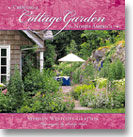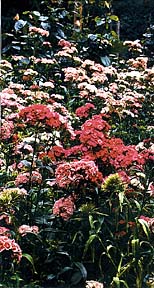 |
||||||||||
 |
||||||||||
 |
||||||||||
 |
||||||||||
|
Search
|
||||||||||
|
Titles |
||||||||||
|
|
||||||||||
 |
|
|
||||||||||||||||||||
|
For instance, traditional English cottage gardens had about the same amount of garden space as do modern homes in many urban centers. Applying the wisdom of a garden style in which plants—whether flowers, herbs, fruits, or vegetables—are packed densely together makes perfect sense for the gardener with only a postage-stamp yard. Not only will the happily commingled plants give great visual treats, such as an occasional tomato or green pea struggling up through the clematis, but their profusion will usually out compete weeds. Creating a Cottage Garden in North America is not only a definitive, hands-on guide to this popular garden style, but it is also a lively read that reveals the romance and the reality of the cottage garden. |
|
|
|
|
Did You Know? |
|||||||
|
Excerpt Sweet William Sweet William seems to me to be a victim of the class system. Most Dianthus enthusiasts start their excursion in to pinks and carnations with this delightful short-lived perennial, but they frequently relinquish it when they become sophisticated enough to sport Dianthus knappii in their borders. Never mind, the horticultural nouveaux riches generally come back to them in the end, and in the meantime, it leaves more seed for the rest of us. Sweet William is a cottage garden plant of old and, as is the case with so many of the plants we treat as biennials, the best bloom is to be had from two-year-old plants. Occasionally, precocious seedlings started indoors will produce some flower the first seasons, and if they do, be sure to deadhead them. After they flower the second season, it’s best to let the plants set seed and then toss them out. This approach sounds somewhat bloodthirsty, but it’s the best way to ensure superior flowering.
Native to Eurasia and hardy to zone 3, Sweet Williams come in a variety of shades ranging from pure white to pink and red combinations. Unlike the rest of the Dianthus genera, Sweet Williams hold many clusters of individual flowers per stem rather than just one, giving them the appearance of dwarf phlox. Best of all, their markings are exquisite—they may have dark or light contrasting bands, or fringed petals, or both—the variations are endlessly elegant. |
|||||||
|
Fulcrum Publishing – 16100 Table Mountain Parkway, Suite 300 – Golden, Colorado 80403
|
|||||||

